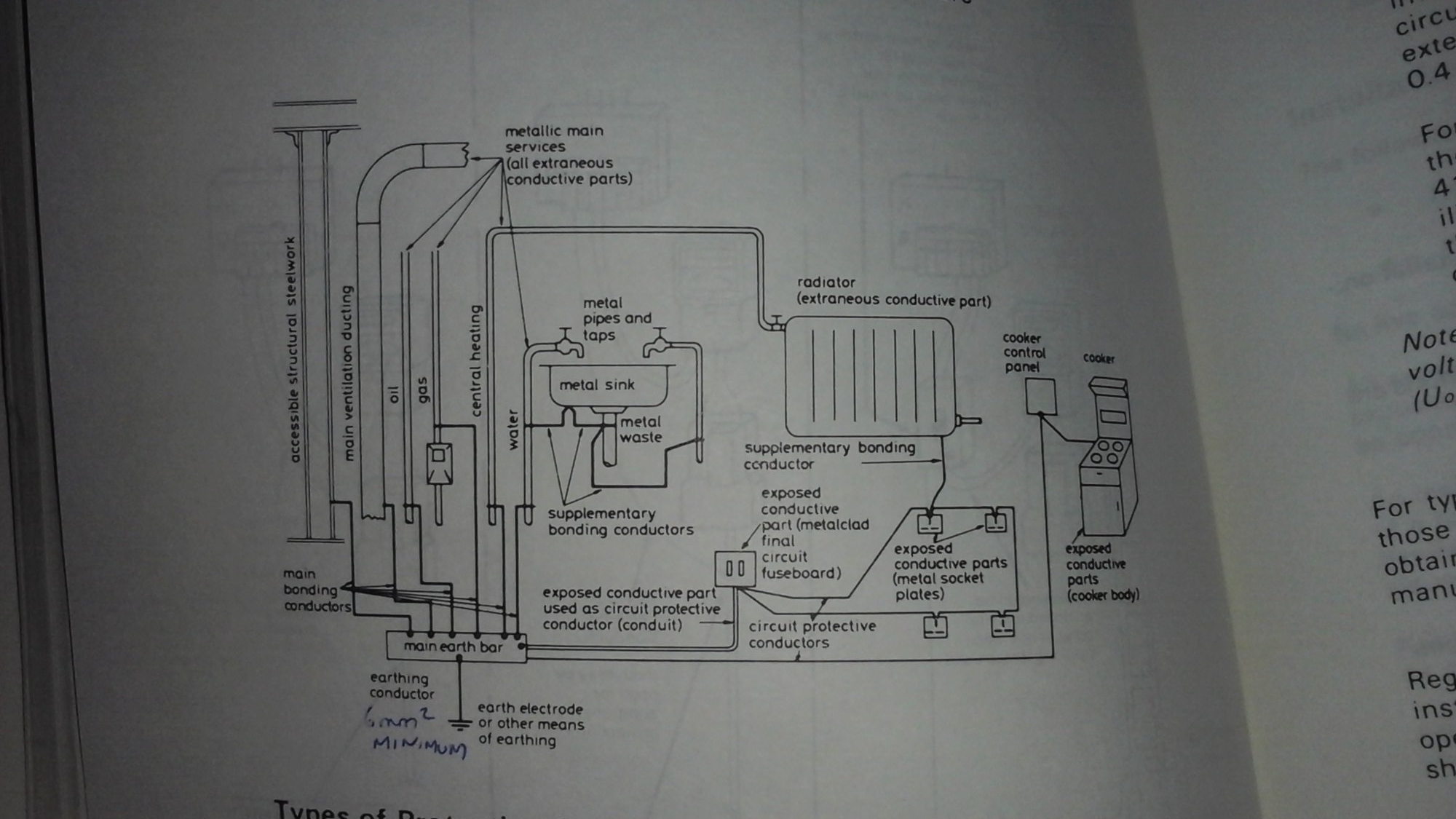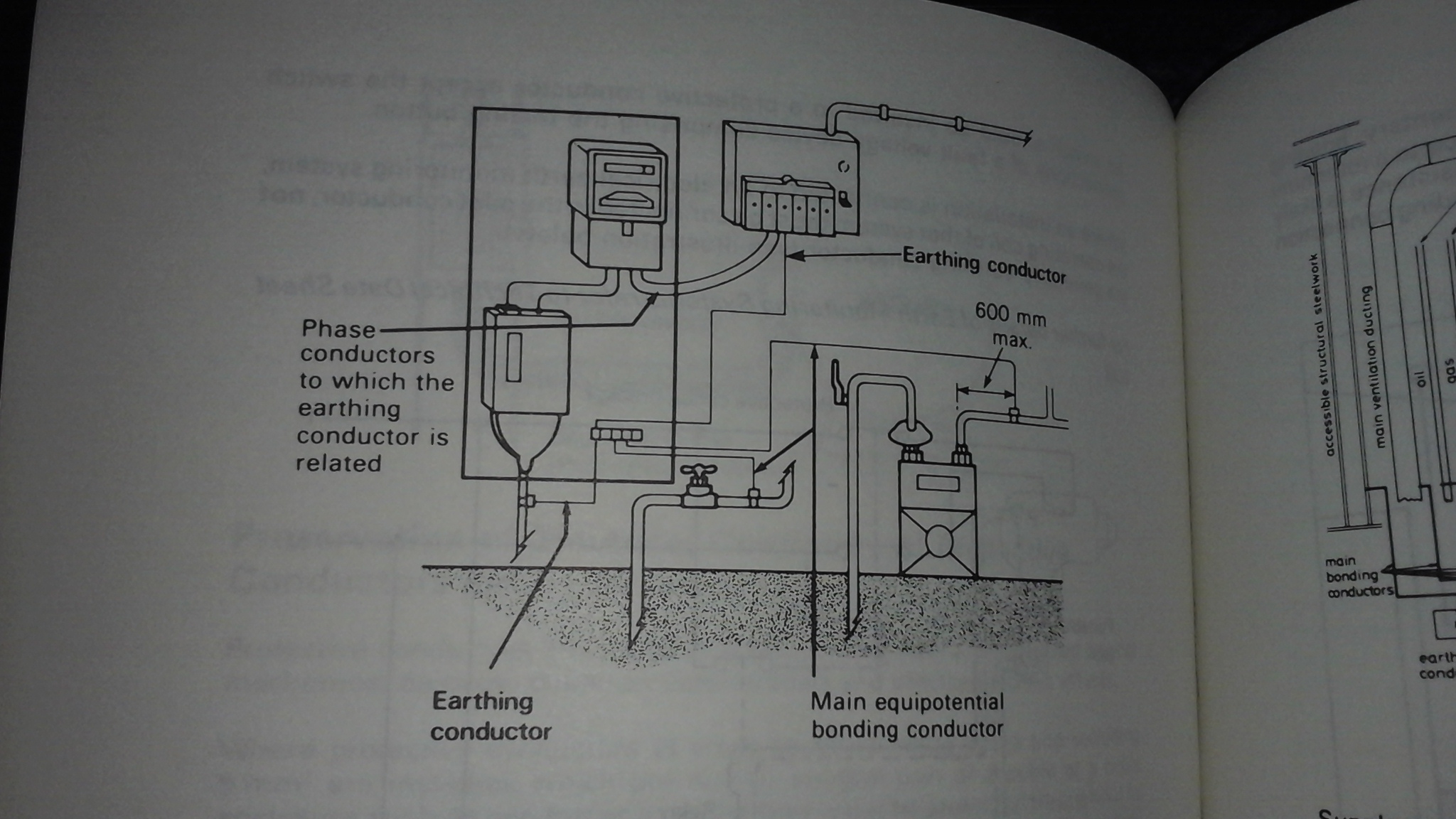Disagree really.
Is that what ALAN posted, surely thats like shooting hisself in the foot!
Sorry meant to include this also:
I take that to refer that Extraneous-conductive-part is a conductive part that is ouside of the electrical installation, eg a pipe that may, or may not enter from the outside which may produce a potential difference between the electrical Main terminal and that metal pipe. It says that is generally to ground but it does not say the PD might come from elsewhere.Also from OSG definitions
Extraneous-conductive-part. A conductive part liable to introduce a potential, generally Earth potential, and not forming part of the electrical installation.
OK I agree heating radiators was pushing it a bit!



